

MATHEMATICS
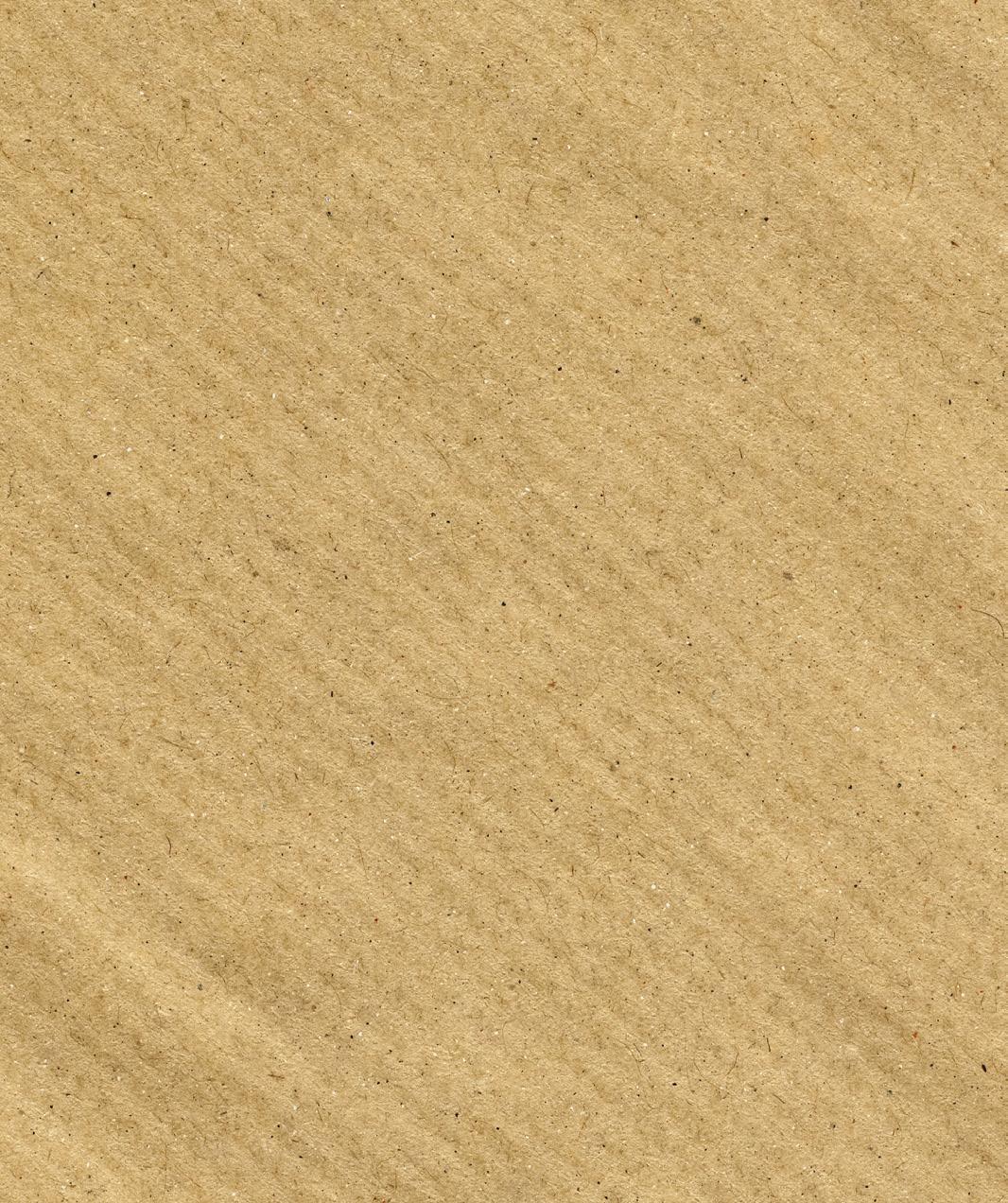




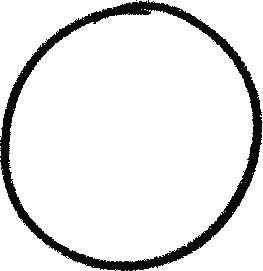
INDEX

Train yourself by solving problems 9
Summary. 1 Make a plan • 2 Represent data in a diagram • 3 Trial and error • 4 Work systematically
1. Natural numbers and integers 11
1 The set of natural numbers • 2 The relation of divisibility • 3 Prime and composite numbers • 4 Lowest common multiple • 5 Greatest common divisor • 6 The º set of integers • 7 Operations with integers • 8 Powers of integers • 9 Square roots of integers • The final challenge
2. Decimal numbers and fractions 21
1 Decimal numbers • 2 Operations with decimal numbers • 3 The square root of a decimal number • 4 Fractions • 5 Fractions and decimal numbers • The final challenge
3. Operations with fractions 29
1 Adding and subtracting fractions • 2 Multiplying and dividing fractions • 3 Problems with fractions • 4 Powers and fractions • The final challenge
4. Proportionality
37
1 Ratios and proportions • 2 Directly proportional magnitudes • 3 Inversely proportional magnitudes • 4 Problems of compound proportionality • 5 Problems of proportional distribution • The final challenge
5. Percentages
45
1 Percentages. Concept • 2 Problems with percentages • 3 Bank interest • 4 Other arithmetic problems • The final challenge
6. Algebra 55
1 Algebra: why do we use algebra? • 2 Algebraic expressions • 3 Polynomials • 4 Notable products • The final challenge
7. Equations
1 Equations: meaning and use
63
• 2 Equations: elements and terminology • 3 Transposing terms • 4 Solving simple equations • 5 Equations with denominators
• 6 The general method for solving first-degree equations
• 7 Solving problems with equations • 8 Second-degree equations • 9 Solving second-degree equations • The final challenge
8. Systems of equations
73
1 First-degree equations with two unknowns
• 2 Systems of linear equations • 3 Methods for solving linear systems • 4 Solving problems with systems of equations • The final challenge
9. Pythagorean theorem
81
1 Pythagorean theorem • 2 Finding the missing side of a triangle • 3 Applications of Pythagorean theorem
• The final challenge
10. Similarity
87
1 Similar shapes • 2 Plans, maps and models • 3 How to build similar shapes • 4 Thales’ theorem • 5 Similarity between right-angled triangles • 6 Applications of the similarity of triangles • The final challenge
11. Three-dimensional geometric shapes
95
1 Prisms • 2 Pyramids • 3 Truncated pyramids • 4 Regular polyhedra • 5 Cross-sections of polyhedra • 6 Cylinders • 7 Cones • 8 Truncated cones • 9 Spheres • The final challenge
12. Measuring volume
105
1 Units of volume • 2 Cavalieri’s principle • 3 Volume of a prism and a cylinder • 4 Volume of a pyramid and a truncated pyramid • 5 Volume of a cone and a truncated cone • 6 Volume of a sphere • The final challenge
13. Functions
113
1 The concept of a function • 2 Increases and decrease • 3 Representing functions in table form • 4 Representing functions as equations • 5 Proportional functions: y = mx • 6 The slope of a line • 7 Linear functions: y = mx + n • 8 Constant functions: y = k • The final challenge
14. Chance and probability
121
1 Random events • 2 Probability of an event • 3 Assigning probabilities to regular experiments • 4 Some strategies for calculating probability • The final challenge
1 NATURAL NUMBERS AND INTEGERS
Natural numbers
TAKE ACTION!
How many minutes of physical activity are recommended at each stage of life?
Take on the 'Final Challenge' and create a weekly schedule to reach the recommended time for your age.
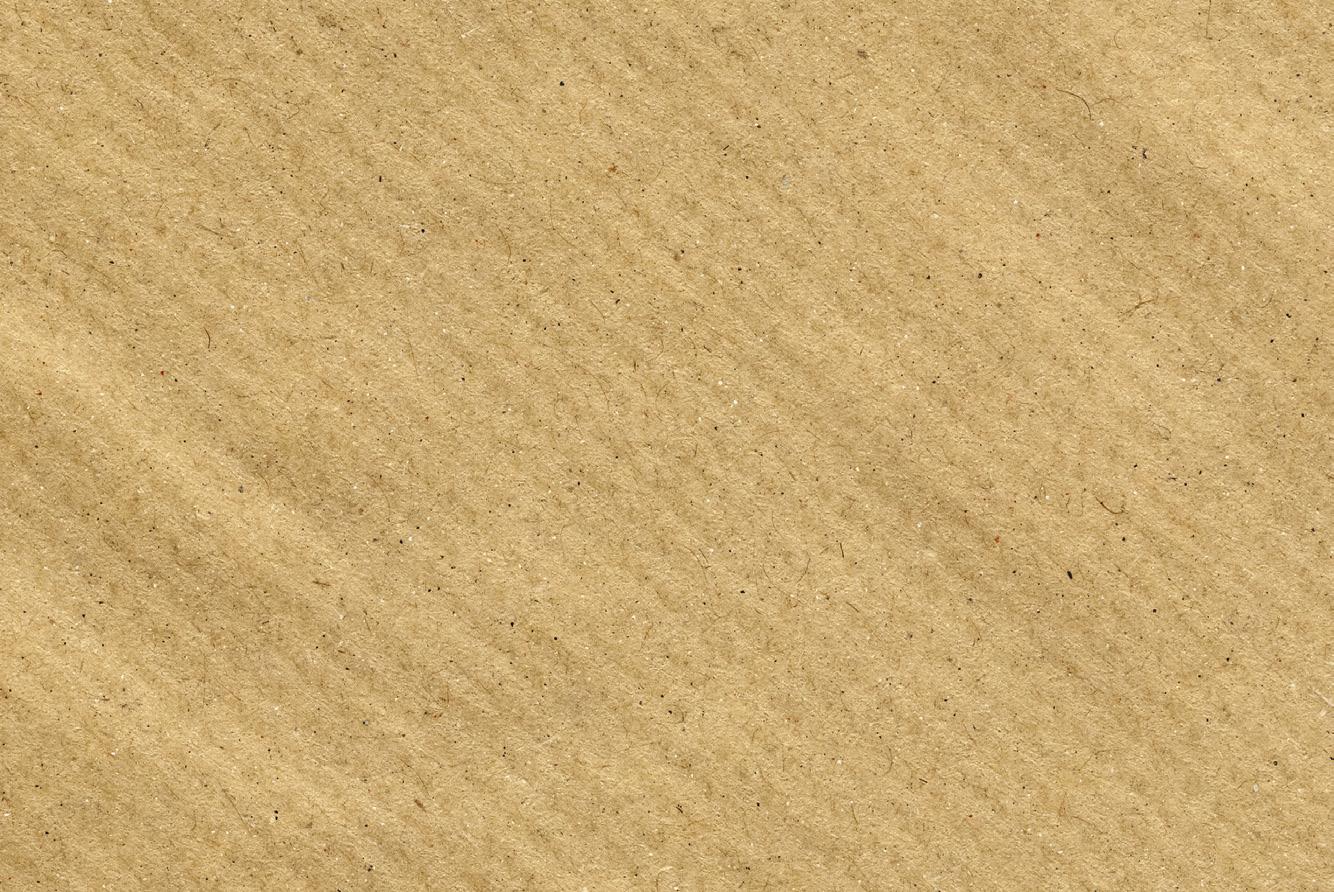
Numeral systems
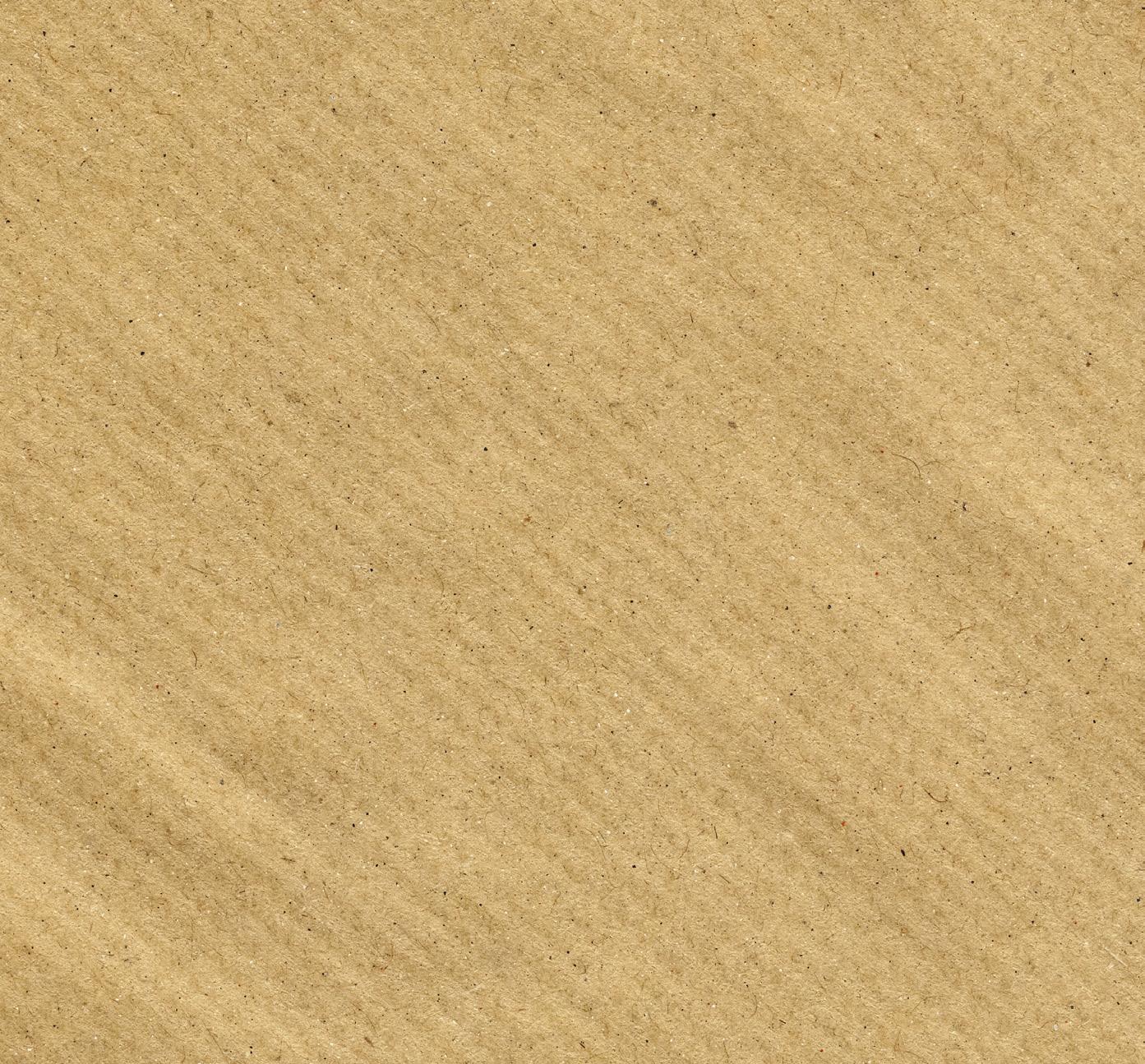
Divisibility
Decimal system
Divisibility relation
Sexagesimal system Divisor
Multiple
Divisibility criteria
Prime and composite numbers
Factorisation:
Lowest common multiple and greatest common divisor
Integers
Absolute value
Addition and subtraction
Multiplication and division
Combined operations
Powers
Roots
Of two numbers
Of more than two numbers
Rule of signs
Order of priority
Properties
Square roots
Roots with an index greater than two
Listening
Listen and repeat. The vocabulary is at anayaeducacion.es
Discover
The Pythagoreans gave special meanings to certain numbers. Some numbers can be represented by dots forming an equilateral triangle. They called these triangular numbers. Did you know that there are also square and pentagonal numbers?
FOCUS ON ENGLISH
Reading
Read the text ‘The origins of negative numbers' at anayaeducacion.es and answer the questions.
The set of natural numbers 1


The numbers we use to counts objects, one by one, are called natural numbers. The set of natural numbers is represented with the letter N. It has a beginning and an order, but it has no end: N = {0, 1, 2, 3, 4, …}
The decimal numeral system
Usually, we use the decimal numeral system (DNS).
Remember
Natural numbers are represented and ordered on a numbered line. 0 1 2 3 4 10 9 0 1 2 3 4
• Is a positional system, which means that each digit has a place value.
• Is a decimal system because ten units of any place value make one unit of the place value immediately above. 1 HTh = 10 TTh = 100 Th = 1 000 H = 10 000 T = 100 000 U
Remember how to do the polynomial decomposition of a number:
The sexagesimal system
The sexagesimal system is used to measure time and angles. Each place value is divided into 60 units of the place value inmediately below.
1h 60 min
1min 60 s = = 3 1
Remember that the measurement of amounts associated with a quantity can be expressed in a complex or simple form.
1 Copy, calculate and complete.
a) 23 min 45 s → … s b) 1 h 13 min 27 s → … s c) 587 min → … h … min d) 6 542 s → … h … min … s

The relation of divisibility 2
Multiples and divisors
Two numbers are related through the divisibility relation when their quotient is exact.
If the division a : b is exact a is a multiple of b. b is a divisor of a.
• The multiples of a number contain that number an exact number of times. They are the result of multiplying that number by another natural number.
Let’s calculate the first multiples of 12:
• The divisors of a number are contained in that number an exact number of times. They divide it with an exact quotient.
Let’s calculate the divisors of 12:
divisors of 12 are:
The sum of two multiples of a number, a, is another multiple of a.
1 Writing. Answer the questions and explain your answers.
a) Is 132 a multiple of 11?
b) Is 11 a divisor of 132?
2 Write:
a) Is 132 a multiple of 11?
b) Is 11 a divisor of 132?
60 20 0 3 → 60 is divisible by 20.
60 es múltiplo de 20. 20 es divisorde 60. ) 60 is a multiple of 20. 20 is a divisor of 60.
Observe
• A number has infinite multiples.
• Every number, a, is a multiple of itself and the unit. → a · 1 = a
Observe
• A number has a finite number of divisors.
• A number has at least two divisors: the number itself and the unit.
3 Listening. Find the multiples and divisors of a number at anayaeducacion.es.
4 Draw all the ways of representing 36 as a rectangular number.
36 = 3 · 12
How are they related to the divisors of 36?

Divisibility criteria
• A number is divisible by 2 (it is a multiple of 2) if it ends in 0, 2, 4, 6 or 8.
• A number is divisible by 3 (it is a multiple of 3) if the sum of its digits is a multiple of 3.
• A number is divisible by 5 (it is a multiple of 5) if it ends in 0 or 5.
• A number is divisible by 9 (it is a multiple of 9) if the sum of its digits is a multiple of 9.
• A number is divisible by 10 (it is a multiple of 10) if it ends in 0.
• A number is divisible by 11 (it is a multiple of 11) if the sum of its odd place digits, minus the sum of its even place digits (or vice versa), is a multiple of 11.
• 134 → is a multiple of 2.
• 501 → is a multiple of 3. 5 + 0 + 1 = 6
• 705 → is a multiple of 5
• 243 → is a multiple of 3 and of 9. 2 + 4 + 3 = 9
• 890 → is a multiple of 5 and of 10.
• 913 → is a multiple of 11. (9 + 3) – (1) = 11
5 Copy these numbers and find:
a) The multiples of 2. b) The multiples of 3.
c) The multiples of 5. d) The multiples of 11.
6 Listening. Practice divisibility criteria at anayaeducacion.es.

Prime and composite numbers
• A prime number only has two divisors: the number itself and one.
• Numbers that are not prime are called composite numbers.
Decomposing a number into its prime factors
To decompose a number into prime factors, you need to take into account the divisibility criteria.
Let’s factorise the number 594: 594 2 594 : 2 ⎯⎯→ 297 3 297 : 3
99 3 99 : 3
33 3 33 : 3
11 11 11 : 11 ⎯⎯→ 1 594 = 2 · 33 · 11
1 Speaking. Separate the prime numbers from the composite numbers.
29 39 57 83 101 111 113 243
2 Decompose the following numbers into prime factors.
a) 84 c) 160 e) 720 b) 130 d) 594 f) 975
Lowest common multiple 4

The lowest common multiple of several numbers, a, b, c, … is their smallest common multiple, and is usually written like this: LCM (a, b, c, …).
To calculate the lowest common multiple of several numbers:
LCM (200, 240)
• First, we decompose the numbers into prime factors. 200 2
2
2
• Then, we take all the prime factors, both common and uncommon, raised to the highest exponent shown. LCM (200, 240) = 24 · 3 · 52 = 1 200
Greatest common divisor
1 Calculate.
a) LCM (6, 11)
b) LCM (18, 24)
c) LCM (72, 90)
2 Reading. Read the text and answer the question.
A supermarket does an inventory every 36 days and rearranges the shelves every 24 days. How often do both tasks coincide on the same day?

common divisor, and is usually written like this: GCD (a, b, c, …).
To calculate the greatest common divisor of several numbers:
GCD (200, 240)
• First, we decompose the numbers into prime factors.
• Then, we take only the common prime factors, each raised to the smallest exponent.
GCD (200, 240) = 23 · 5 = 40
1 Calculate.
a) GCD (4, 6)
b) GCD (15, 20)
c) GCD (24, 36)
2 Reading. Read the text and answer the question.
A carpenter wants to split two boards, which are 200 cm and 240 cm long respectively, into equal pieces that are as long as possible, without having any wood left over. How long should each piece be?
6

The Z set of integers
These integers are represented by the letter Z
Observe
The absolute value of a number is equal to its distance from zero on the number line.
The absolute value of an integer is the natural number that we get from taking away the sign, which is written between bars.
| a | → absolute value of a
The opposite of an integer is another integer of identical absolute value, but with the opposite sign.
• The absolute value of +7 is 7. |+7| = 7
• Opposite of (+7) → (–7)
• The absolute value of –7 is 7. |–7| = 7
• Opposite of (–7) → (+7)
The set of integers is represented and ordered on the number line:
Operations with integers
1 Write the absolute value and the opposite of each number.
a) –3 b) +8
c) +23 d) –37
2 Order these numbers from smallest to biggest. – 7, –13, +8, –1, +1, +5, 0, +10, –24

To add (subtract) two integers:
• If they have the same sign, we add their absolute values and keep the signs of the addends.
• If they have a different sign, we subtract the absolute values and use the sign of the number with the biggest absolute value.
1 Writing. Read, consider and complete.
a) If I spend €4 and then another €2 (–4 – 2 = …), I will have €... less than I started with.
b) If I am given €10 and then €3 are taken from me (10 – 3 = …), I will have €… …than I started with.
In operations with more than two positive and negative numbers, we have two options:
• Operate step by step, in the order in which they appear.
• Group the positive numbers on one side, and the negative ones on the other. Then, proceed with the operation.
Addition, subtraction and brackets
• When there is a + sign before brackets, the signs inside the brackets do not change.
• When there is a – sign before brackets, the signs inside the brackets change: plus to minus, and minus to plus.
Multiplying integers
• To multiply two integers we apply the following rule:
The rule of signs
The product of two integers is positive if the factors have the same sign and negative if the factors have different signs.
· (+) = + (–) · (–) = +
· (–) = –(–) · (+) = –
Dividing integers
In divisions, the rule of signs is applied in the same way as in multiplications.
• Brackets preceded by the + sign: +(–3 + 8 – 2) = –3 + 8 – 2
• Brackets preceded by the – sign: –(–3 + 8 – 2) = +3 – 8 + 2
Combined operations
The order we follow to calculate the value of the combined operation below: (–18) : (11 – 9 – 5) + 5 · (6 – 8) = = (–18) : (–3
1st The operations inside the brackets.
2nd The multiplications and divisions.
3rd The additions and subtractions.
2 Solve by removing the brackets.
a) (4 – 9) – (5 – 8)
b) –(1 – 6) + (4 – 7)
c) 4 – (8 + 2) – (3 – 13)
3 Calculate.
a) (+10) · (–2)
b) (–7) · (+5)
c) (–15) : (–5)
d) (+22) : (+11)
4 Calculate.
a) 20 – 4 · 7 + 11
b) 15 – 20 : 5 – 3
Powers of integers 8

A power is a multiplication of identical factors.
Powers of negative numbers
When raising a negative number to a power:
• If the exponent is even, the result is positive.
(– a)n (even) → positive
• If the exponent is odd, the result is negative.
(– a)n (odd) → negative
Properties of powers
(–3)1 = –3
(–3)2 = +9 (–3)3 = –27
(–3)4 = +81
• The power of a product is equal to the product of the powers of the factors.
(a · b)n = a n · b n
• The power of a quotient is equal to the quotient of the powers of the dividend and divisor.
(a : b)n = a n : b n
• To multiply two powers with the same base, we add the exponents. a m · a n = a m + n
• To divide two powers with the same base, we subtract the exponents. a m : a n = a m – n
• To raise one power to another power, we multiply the exponents.
(a m)n =
1 Write as a product and calculate. a) (–5)2 b) (–10)5 c) (–8)3
2 Reduce to a single power.
a) 32 · 42 b) (–2)3 · 43
c) (–5)2 · (+3)2 d) (+15)3 : (–5)3
e) (–20)2 : (– 4)2 f) (–18)4 : (+6)4
Observe
The power of a sum (or subtraction) is not equal to the sum of the powers of the addends.
[(–2) + (–3)]2 = [–5]2 = +25 (–2)2 + (–3)2 = 4 + 9 = +13
3 Reduce to a single power. a) (–2)5 · 27 b) (–2)3 · (+2)6 c) (–12)2 · (+12)2 d) (–7)8 : (–7)5 e) 109 : (–10)4 f) (– 4)10 : (+4)6
4 Apply the property ( a m ) n = a m · n , and reduce. a) (x 3)2 b) (a 3)3 c) (z 6)3
Square roots of integers 9

The square root is the opposite of raising to the power of two (squaring). a = b ⇔ b 2 = a
Numbers that have an integer square root are called perfect squares.
A positive number has two square roots, a positive one and a negative one.
The square roots of 16 are 4 and –4. 4 → because 42 = +16 – 4 → because (– 4)2 = +16
Other roots
We can get roots with an index greater than two. In general:
A negative number does not have a square root.
() –16 = x ⇔ x 2 = –16 → → Imposible
() –16 → Doesn’t exist, because there is no number whose square is negative.
Observe
1 Calculate the following square roots if they exist.
a) () 1 + b) () –1 c) () 25 + d) () –36 e) () +100 f ) () –100
2 Look at the example and reduce.
xx x 63 23 2 · == = x 3 a) x 4 b) m 6 c ) a 8
3 Writing. Calculate the roots, if they exist. If they do not exist, explain why.
TAKE ACTION!
MAKE A TIMETABLE
Alone or in a team, do the activities and, at the end, come up with a weekly schedule to reach the minutes of physical activity recommended for your age. The final challenge

The manager of a gym sent an online questionnaire to all users to find out when they would like the new Pilates classes to be taught. These are the results.
From 8:00 to 8:45 40
From 9:15 to 10:00 45
From 10:30 to 11:15 45 From 11:45 to 12:30 40
From 13:00 to 13:45 34
From 14:30 to 15:15 15
From 16:30 to 17:15 20
From 19:00 to 19:45 50
1 Based on the results, the manager must first decide when to run the class in the morning, at midday or in the afternoon.
a) Help the manager take a decision by completing the following table. Use a single expression to calculate the number of users in each case.
From 13:45 to 14:30 15
From 15:15 to 16:00 21
From 17:45 to 18:30 50
From 20:15 to 21:00 50
b) When is it best to offer the Pilates class and why? No. of
2 The World Health Organisation (WHO) recommends at least 150 minutes per week of moderate aerobic activity for adults under 65 years of age, and a minimum of 60 minutes per day for adolescents.
a) How many Pilates classes should an adult attend per week to meet the minimum physical activity recommended by the WHO?
Final product
How many minutes of exercise do you do per day and per week, and do you meet the WHO recommendations? Design a weekly schedule, in digital format, in which you include the exercise
(From 8:00 to 11:45)
(From 13:00 to 15:15)
(From 16:30 to 20:15)
b) Between classes, the gym offers 15-minute intensives to work on a specific area of the body. Calculate and explain how Pilates classes and intensives can be combined to achieve 150 minutes of exercise per week. abdomen legs glutes (buttocks)
sessions necessary to carry out the recommended amount of exercise for your age, alongside your other weekly activities.
2 DECIMAL NUMBERS AND FRACTIONS
Decimal numbers
TAKE ACTION!
What social networks do you know and what do you use them for?
Take on the ‘Final Challenge’, analyse the results obtained by Fatima by publishing her music on different social networks and write a report.

Structure
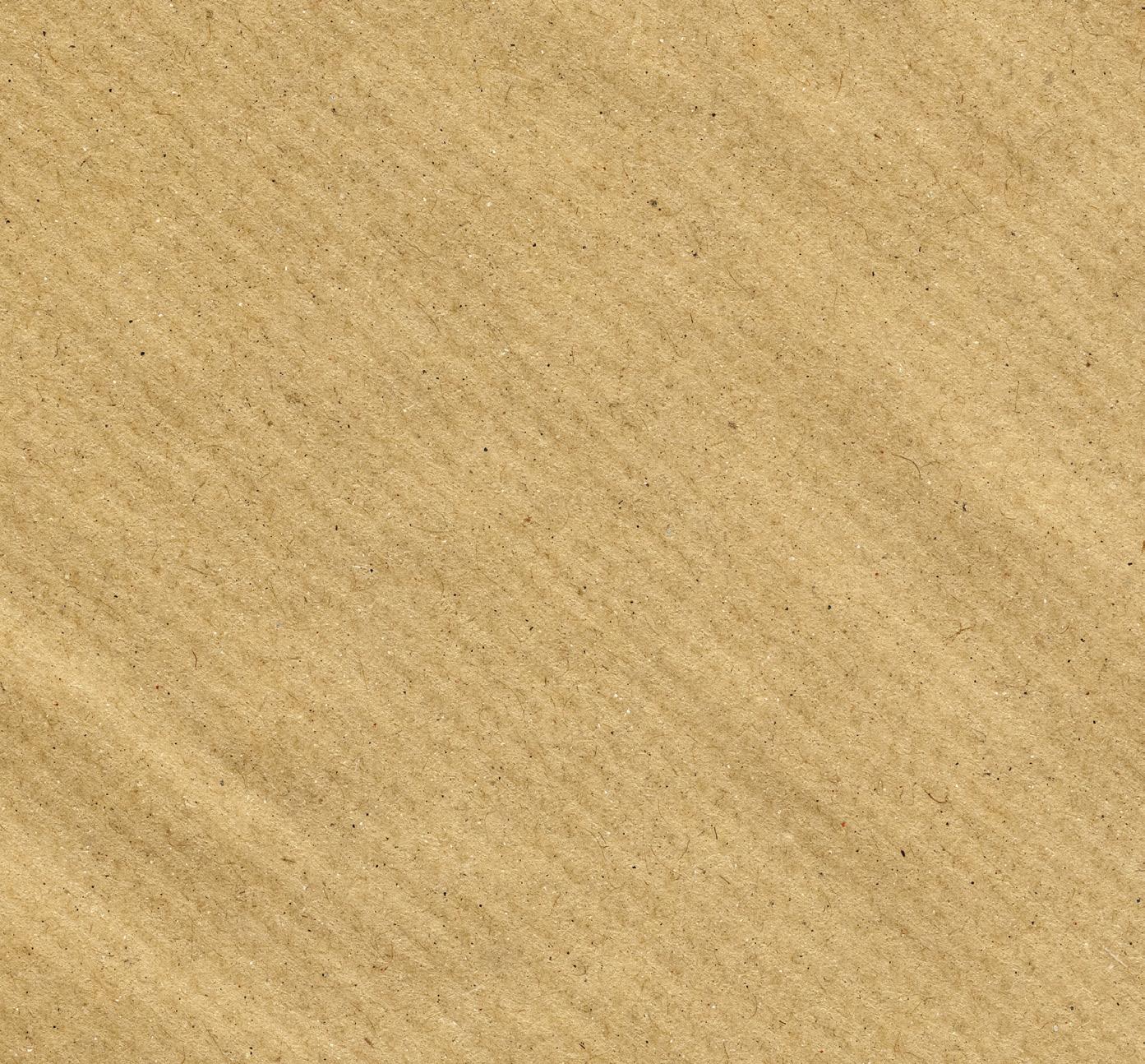
Equivalent fractions
Fundamental property
Simplification
Irreducible fraction
types
Terminating
Recurring
Pure
Mixed
Non-terminating and non-recurring
Order
Representation
Comparison
Rounding
Operations
Addition and subtraction
Multiplication and division
Combined operations
Square roots
Fractions converting
Reduction to a common denominator
Comparison
Decimals into fractions
Listening
Rational numbers
Listen and repeat. The vocabulary is at anayaeducacion.es.
Discover
In ancient Mesopotamia they used a sexagesimal numbering system to write fractions. These fractions had powers of base 60 as denominators. Centuries later they were replaced by the decimal fractions we use today, when these were found to make performing calculations easier.
FOCUS ON ENGLISH
Reading
Read the text ‘Fractions through history’ at anayaeducacion.es and answer the questions there.
Decimal numbers 1

We use decimal numbers to express quantities in between two integers. 28.3758
The decimal part represents an amount less than the unit. The decimal place values have the same structure as that of the integer part:
1 unit = 10 tenths ⎯⎯⎯⎯⎯⎯⎯⎯⎯⎯⎯→
1 tenth = 10 hundredths ⎯⎯⎯⎯⎯⎯⎯→
1 hundredth = 10 thousandths ⎯⎯⎯⎯→
t u. t h th tth 2 8. 3 7 5 8 →
Twenty-eight units and three thousand, seven hundred and fifty-eight ten thousandths
Types of decimal numbers
• Terminating decimals: have a limited number of decimal places. 4.75
• Recurring decimals: have an infinite number of decimal figures which are repeated periodically. There are two types: Pure recurring decimals: Mixed recurring decimals:
6 ! period non-recurring decimal part period
• Non-terminating and non-recurring decimals: have an infinite number of decimal figures which are not repeated periodically. 2 = 1.4142135…
1 Speaking. Read these numbers aloud. a) 1.37 b) 5.048 c) 0.00538
2 Write in figures.
a) Three units and five hundredths. b) Forty-three thousandths.
Remember
A unit of any place value is divided into ten units of the next inferior place value.
Remember
To read a decimal number:
• We name the integer part expressed in units.
• We name the decimal part expressed in the order of units of the decimal place value to its right.
3 Classify the following decimal numbers: 1.292929…
Representing and ordering decimal numbers
Each decimal number is represented with a point on the number line.
Decimal numbers are ordered on the number line. If we choose any two numbers, the lowest is on the left and the highest is on the right.
–1.263 < –0.4 < 0.6751 < 1.55 < 2.753
We can also compare numbers without looking at the number line, by looking at the figures and the decimal places they occupy (see figure ❶ ).
Approximating a decimal number to a certain decimal place
To round off a decimal number to a given place value:
• We delete the decimal figures to the right of this place value.
• If the first deleted digit is 5 or greater, we round up by adding one to the digit before it. If not, we leave it as it is.
Let’s round of the number 2.83516:
To the nearest unit. → 3
To the nearest hundredth. → 2.84
To the nearest tenth. → 2.8 To the nearest thousandth. → 2.835
When we round off we give an approximate value, so we are making an error on purpose.
To calculate the error, we subtract the real value from the one obtained by rounding off.
There are always other decimals between two decimal numbers
• Between any two decimals, for example 5.5 and 5.9, there are other numbers.
Comparing decimal numbers ❶
To compare two decimal numbers, we compare the corresponding decimal places, figure by figure starting from the left.
• Between any two consecutive decimals, for example 5.5 and 5.6, there are also other numbers, because the difference between these two numbers is a tenth, which can be divided into ten hundredths. This reasoning can continue indefinitely and can be applied to any other pair of numbers.
4 Order these numbers from lowest to highest. 7.4; 6.9; 7.09; 7.11; 5.88
5 Copy and complete the boxes in your notebook with the signs <, > or =, as appropriate.
a) 2.5 2.50
b) 6.1 6.987
c) 3.009 3.01
d) 4.13 4.1300
6 Approximate 682 # : a) To the nearest unit.
b) To the nearest tenths. c) To the nearest hundredths.
7 Find a number between: a) 2.2 and 2.3 b) 4.01 and 4.02
Operations with decimal numbers 2

• To add or subtract decimal numbers, we put them in a column matching the corresponding decimal places.
• To multiply decimal numbers, we multiply them as if they are integers. We then separate as many decimal places in the product as the sum of the number of decimal places of the two factors.
Division of decimal numbers
Divisions with an integer divisor
To get decimal places in the quotient:
• When we lower the tenths digit of the dividend, we put the decimal point in the quotient and then continue the division.
• If we do not have enough decimal places in the dividend, we add zeros to get to the desired approximation.
1 Calculate.
a) 2.37 + 0.356
b) 5.86 – 1.749
c) 13.2 + 4.08 + 2.635
d) 15.4 – 6.843
2 Multiply.
a) 6.3 · 1.24
b) 0.016 · 0.0025
c) 5.48 · 2.63
3 Calculate the exact quotient or to a maximum of three decimal places.
a) 8 : 6
Divisions with a decimal divisor
When there are decimals in the divisor:
• We multiply both the dividend and the divisor by the unit followed by as many zeros as there are decimal places in the divisor.
• The new division has the same quotient and an integer divisor.
b) 2.58 : 15
c) 45.6 : 3.8
4 Writing. Experiment, think of some examples, and then copy and complete in your notebook.
a) Multiplying by 0.1 is the same as dividing by...
b) Dividing by 0.1 is the same as multiplying by...
c) Multiplying by 0.5 is the same as...
d) Dividing by 0.5 is the same as...
Combined operations
In expressions involving decimal numbers with brackets and combined operations, we follow the same rules as we do with integers with regard to the priority of operations, the rule of signs, etc.
1. The operations that are inside the brackets.
2. The multiplications and divisions.
3. The additions and subtractions. 1.5 – 0.5 · (4.32 – 6) = = 1.5 – 0.5 · (–1.68) = = 1.5 + 0.84 = = 2.34
5 Do the operation and solve.
a) 3.6 – 0.5 · (4 – 2.26)
b) 0.75 : (2.65 – 1.15) – 1.1
6 Listening. Practice combined operations with decimal numbers at anayaeducacion.es
7 Speaking. A tap supplies 25 litres per minute. How long will it take to fill an 80-litre tank? Solve and discuss the solution as a group.
3
The square root of a decimal number
Remember
• To solve a problem whose solution is an amount of time, we do the operations in the decimal system. However, the solution has to be given in the sexagesimal system.
• When we are solving a problem, the data we use must be compatible, i.e. expressed in the same units. This means that we sometimes have to convert quantities from the sexagesimal to the decimal system.

other numbers.
To calculate the square root of a decimal number, we lower the decimal places two by two from the decimal point, adding zeros until we get to the desired approximation.
Using the calculator
Normally, to calculate the square root we use a calculator ($ key), which gives us the solution with lots of decimal places. . 72 → {∫“…\°«“°‘∞}
From that solution, we get the approximation we need.
1 Calculate to two decimal places.
2 Using a calculator, round off to the nearest thousandths. a) 10 b) . 254 c) 76.38
Fractions 4

Equivalent fractions
Two fractions are equivalent when they express the same portion of the unit. Two equivalent fractions have the same numerical value.
Fundamental property of fractions
If we multiply the two parts of a fraction by the same number, we get an equivalent fraction.
When we divide the two parts of a fraction by the same number, the fraction is simplified.
A fraction that we cannot simplify is called an irreducible fraction.
Reducing fractions to a common denominator
Comparing, adding and subtracting fractions is very simple when they all have the same denominator. When they do not, we substitute them for equivalent fractions which have the same denominator.
To reduce fractions to a common denominator:
• We calculate the lowest common multiple of the denominators.
• We multiply the two parts of each fraction by the number that we get from dividing the lowest common multiple by the corresponding denominator.
1 Write three equivalent fractions in each case.
2 Find the
Two fractions are equivalent if their cross products are the same.
Irreducible fraction
3 Calculate the unknown term in each equation.
4 Writing. Order these fractions from lowest to highest and explain how you did it.
Fractions and decimal numbers

Any fraction can be converted into decimal form. To do this, the numerator is divided by the denominator. The opposite is not true: we cannot convert all decimals into fractions. We can only convert terminating and recurring decimals into fractions.
Converting a terminating decimal number into a fraction
A terminating decimal can be converted into a fraction by removing the decimal point and dividing it by the unit followed by as many zeros as the original number had decimal places.
Converting a pure recurring decimal number into a fraction
The process of finding the fraction corresponding to a pure recurring decimal is as follows:
• We call the number A. For example, A = 1.222…
• We multiply it by 10 and subtract the number itself:
Converting a mixed recurring decimal number into a fraction
The process of finding the fraction corresponding to a mixed recurring decimal is as follows:
• We call the number B. For example, B = 0.7222…
• We multiply it by 100, then by 10 and subtract:
Observe
We multiply A by a power of base 10 to get another number with the same decimal part. This way, when we subtract the number itself we get an integer.
Observe
We multiply B twice by powers of base 10 to get two pure recurring decimals with the same period. This way, when we subtract one from the other, we get an integer.
1 Express as a fraction.
2 Associate each fraction with its decimal form.
TAKE ACTION!
The final challenge
PRODUCES A REPORT ON SOCIAL MEDIA
Alone or in a team, role play, carry out the activities and, at the end, write a report with the results you obtain and the conclusions.

SCAN THIS CODE TO CONSULT THE GLOSSARY FOR THIS
Fátima has decided to open a public account on several social networks to promote her songs. Her first publication is a video of one of her songs.
1 A few days after publication, Fatima consults her social networks and collects in a table the number of followers and the number of likes she has gained.
a) What fraction of followers on each social network have indicated that they like the video?
Write the irreducible fraction.
b) On which social network has she been most successful?
Express the above fractions as decimal numbers, approximate them to tenths and represent them on a number line.
2 To increase the number of followers, Fatima asks her friends to post her video on their profiles.
a) A few days later, she checks the number of followers again and sees that the number of followers has increased. How many followers does she now have on each network?
b) The number of likes has also increased. How many does she have on each network?
c) On which social network are you now most successful? To

Review the results Fatima has had since she posted her video. Then write a report with the results and conclusions.
FOCUS
sECONDaRY
EDUcAtION 2
mathematics
Contents
1. Natural numbers and integers 2
2. Decimal numbers and fractions 6
3. Operations with fractions 8
4. Proporcionality 10
5. Percentages 12
6. Algebra 14
7. Equations 16
8. Systems of equations 18
9. Pythagorean theorem 20
10. Similarity 22
11. Three-dimensional geometric shapes 24
12. Measuring volume 26
13. Functions 28
14. Chance and probability 30
Natural numbers and integers 1
Numeral systems
Decimal system
It is a positional system: that each unit has a place value.
1 How many units does the number 6 represent in the number 1 653 528?
Relation of divisibility
a is a multiple of b.
If the division a : b is exact 60 is divisible by 20.
b is a divisor of a.
60 20 0 3
60 is a multiple of 20. 20 is a divisor de 60.
2 When is one number a divisor of another?
Prime and composite numbers
2 3
Sexagesimal system
We use it to measure time and angles. Each unit is divided into 60 units of the place value immediately before.
if it ends in 0, 2, 4, 6 or 8.
Divisibility criteria
11
if the sum of the odd place digits minus the sum of the even place digits is a multiple of 11.
A number is a multiple of Prime numbers Composite numbers
if the sum of its digits is a multiple of 3. if it ends in 0 or 5. if it ends in 0.
5
3 Find a number that is a multiple of 3, 9 and 11.
10
9 if the sum of its digits is a multiple of 9.
Factorisation
Factorising a number means decomposing it into prime factors.
You cannot factorise them. They only have two divisors: themselves and one. You can factorise them.
13 = 13 · 1 13 is prime.
4 How many divisors does a prime number have?
40 = 23 · 5 40 is composite.
5 Break the number 1 692 into prime factors.
594 = 2 . 3³ . 11
Lowest common multiple
The lowest common multiple of several numbers is the smallest of their common multiples.
We normally write it like this: LCM (a, b, c, ...).
Calculate the LCM (200, 240)
1st We factorise.
6 Calculate the least common multiple of 12 and 156.
2nd We take the common and not common factors raised to the highest exponent.
3rd LCM (200, 240) = 1200
Greatest common divisor
The greatest common divisor of several numbers is the largest of their common divisors.
We normally write it like this: GCD (a, b, c, …).
Calculate the GCD (200, 240)
2nd We take the common factors raised to the smallest exponent.
1st We factorise. 3rd GCD (200, 240) = 40 23 · 5 = 40
7 Explain why the greatest common divisor of two numbers is a multiple of all common divisors.
Integer
Zero
Natural numbers
Positive numbers
Negative numbers
Absolute value
It is the distance of a number from zero on the number line.
The set of integers
We can represent and order them on a numbered line.
Opposite of an integer
Another integer with the same absolute value but the opposite sign.
8 State the relationship between a number, its negative and its absolute value.
Adding and subtracting two integers
The numbers have the same signs
• We add their absolute values.
• We use the same sign as the addends in the result.
4 + 7 = +11 –6 – 3 = –9 same sign same sign
Adding and subtracting integers
We have two options:
Do the operation step by step, in the order the numbers appear:
8 – 10 + 6 – 5 – 1
– 2 + 6 – 5
4 – 5
The numbers have different signs
• We subtract their absolute values.
• We use the sign of the number with the greatest absolute value in the result.
–4 + 10 = +6 +3 – 8 = –5
The sign of the number with the greatest absolute value.
9 How do you add two whole numbers of different signs?
Group the positive numbers on one side, and the negative ones on the other. Then do the operation. – 1 14 – 15 8 + 6 – 10 – 5 8 – 10 + 6 – 5
10 Calculate this operation in two different ways: 2 – 5 + 3 – 15.
Multiplying and dividing integers
(+4) . (+3) = +12
(–5) . (–4) = +20
(+6) . (–3) = –18
(–4) . (+8) = –32
(+24) : (+4) = +6
(–24) : (–6) = +4
(+24) : (–4) = –6
(–24) : (+4) = –6
Adding and subtracting with parentheses
+ sign in front of brackets
Same sign – sign in front of brackets +(–3 + 8 – 2) = –3 + 8 – 2 –(–3 + 8 – 2) = +3 – 8 + 2
Opposite sign
11
Complete the sentence: If we remove a parenthesis preceded by a minus sign, the signs inside...
Combined operations
1st Brackets 3rd Addition and subtraction 2nd Multiplication and division
(–18) : (11 – 9 – 5) + 5 (6 – 8) = = (–18) : (–3) + 5 · (–2) = We do the divisions and multiplications. We do the additions and subtractions. We calculate inside the brackets. = (+6) + (–10) = = 6 – 10 = –4
12 Calculate the following operation: 12 : (10 – 5 – 2 + 3) – 4 – (7 – 13)
Powers of integers
A power is a multiplication of identical factors:
Powers of negative numbers
13 What is an exponent?
• The power of a product is equal to the product of the powers of the factors.
• The power of a quotient is equal to the quotient of the powers of the dividend and the divisor.
• To multiply two powers with the same base, we add up the exponents.
• To divide two powers with the same base, we subtract the exponents.
Properties of powers
• To raise one power to another power, we multiply the exponents. (a · b)n = an · bn (a : b)n = an : bn
14 How do you multiply two exponents of the same base?
Roots of integers
A square root is the opposite of raising to the power of two (squaring).
Numbers that have an integer square root are called perfect squares.
The square root of a positive number has two solutions, one negative and one positive.
15 Explain what a perfect square is and give two examples other than those in our example.
Negative numbers do not have a square root. A root index can be greater than two. Does not exist. () –16
Decimal numbers and fractions 2
Decimal numeral system
Twenty-eight units and three thousand, seven hundred and fifty-eight ten thousandths thousandshundredstens units tenthshundredthsthousandthstenthousandthshundredthousandthsmillionths
1 Write how to read the number
Types of decimals
Terminating decimals
Have a finite number of decimal places.
Have an infinite number of decimal places which do not repeat periodically. Non-terminating and non-recurring decimals 4.75
2 = 1.4142135…
Recurring decimals
Have an infinite number of decimal places which repeat periodically.
Ordering decimals
Between any two decimals there are an infinite number of decimal numbers.
2 Find a decimal number between 10.1 and 10.2.
Rounding
off decimals To the nearest unit 2
3 Round the number 15.237 to the tenths and hundredths. Error when rounding off decimals: 1.8375 – 1.8 = 0.0375
Operations with decimals
Addition and subtraction
Division with an integer divisor
We put the decimal point in the quotient. We line up the corresponding decimal places.
Multiplication
We put the decimal point in the product with the same number of decimal places as the sum of the two factors.
Division with a decimal divisor
We multiply both the dividend and the divisor by the unit followed by as many zeros as there are decimal places in the divisor.
Combined operations with decimal numbers
1. Brackets
2. Multiplications and divisions
3. Additions and subtractions = 1.5 + 0.84 = 2.34 = 1.5 – 0.5 · (–1.68) = 1.5 – 0.5 · (4.32 – 6) =
4 Calculate: 3.2 + 2.3 · (11.22 – 3.5)
Equivalent fractions
Square roots of decimals
From the decimal point, we lower the decimal places two by two, adding the necessary number of zeros.
5 Explain to a partner the steps that will calculate the root of the example.
6 What is the irreducible fraction of 130/208?
Two equivalent fractions express the same portion of the unit and have the same numerical value.
To get equivalent fractions, we multiply or divide the two parts of a fraction by the same number.
Reducing to a common denominator
2nd 1st
We calculate the LCM of the denominators. We multiply the two parts of each fraction by the number we get by dividing the lowest common multiple by the corresponding denominator.
(12, 21) = 84
and
7 Reduce the fractions 3/15 and 4/45 to a common denominator.
To simplify a fraction, we divide the two parts by the same number
Converting decimals into fractions
• Converting a terminating decimal number into a fraction:
• Converting a pure recurring decimal number into a fraction: A = 1. 2 ! = 1.222…
The decimal part disappears when we subtract.
• Converting a mixed recurring decimal number into a
8 Convert the number 2.34545454545... to fractional form.
The decimal part disappears when we subtract.
© GRUPO ANAYA, S.A., 2024 - C/ Valentín Beato, 21 - 28037 Madrid.
Reservados todos los derechos. El contenido de esta obra está protegido por la Ley, que establece penas de prisión y/o multas, además de las correspondientes indemnizaciones por daños y perjuicios, para quienes reprodujeren, plagiaren, distribuyeren o comunicaren públicamente, en todo o en parte, una obra literaria, artística o científica, o su transformación, interpretación o ejecución artística fijada en cualquier tipo de soporte o comunicada a través de cualquier medio, sin la preceptiva autorización.
